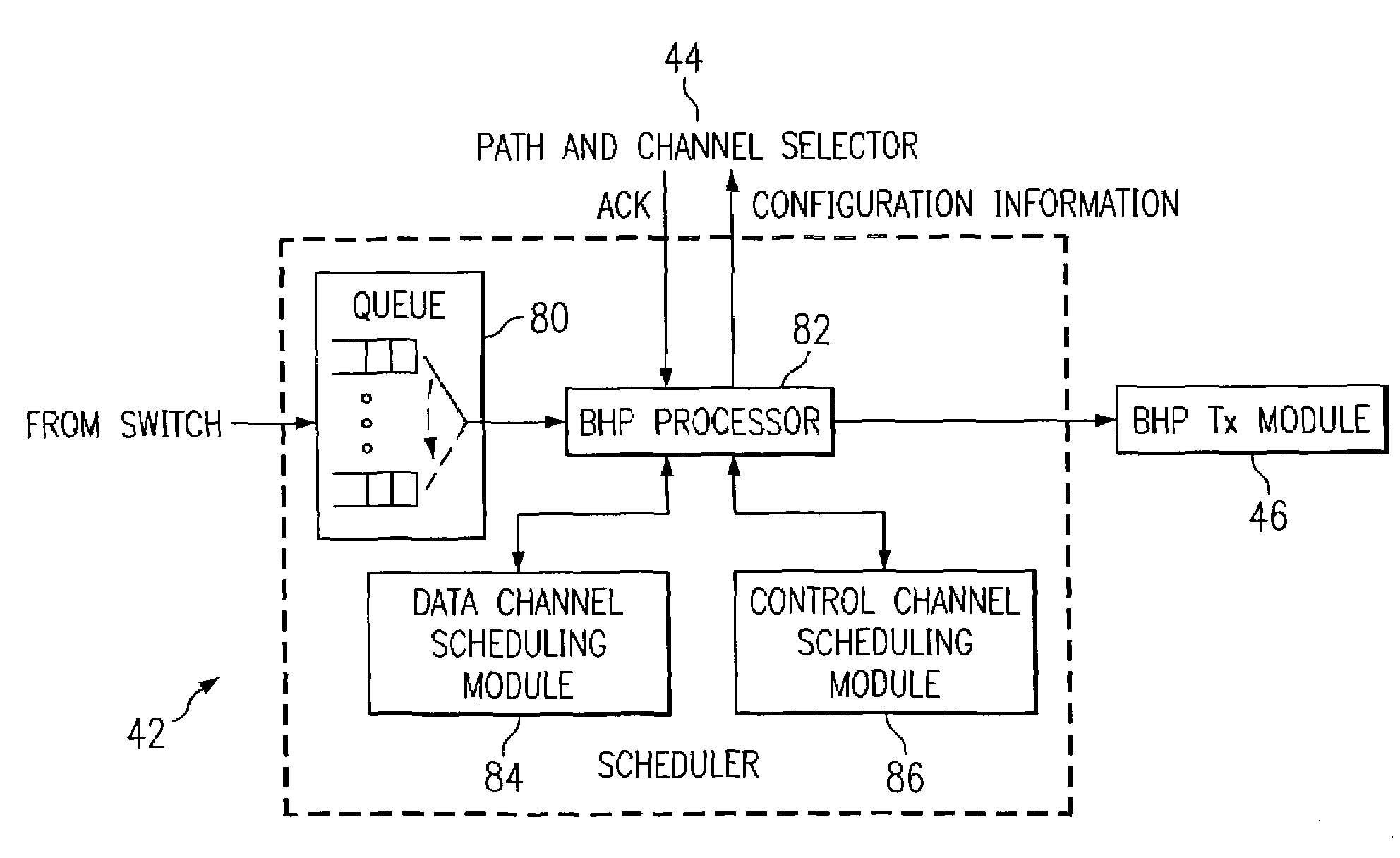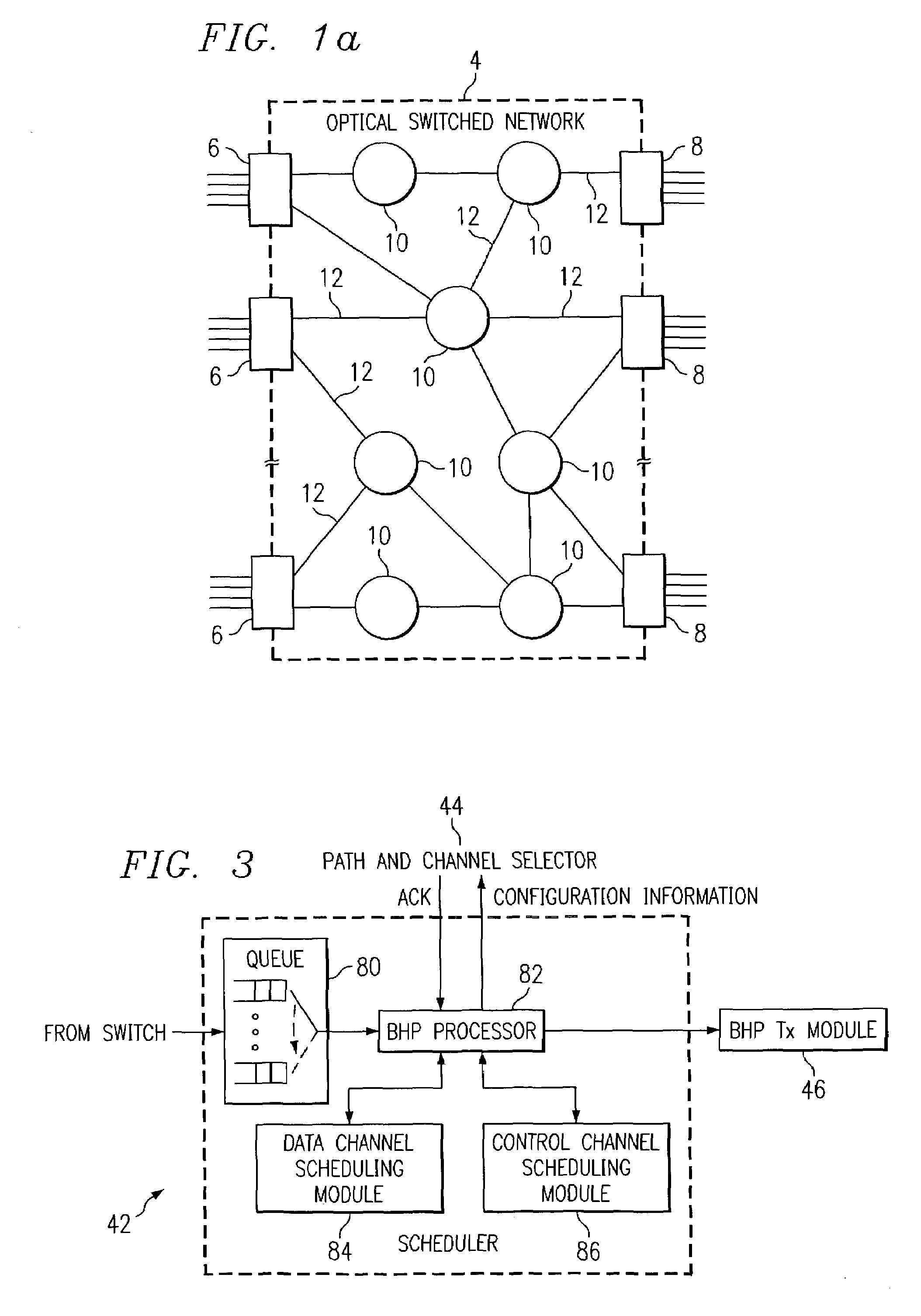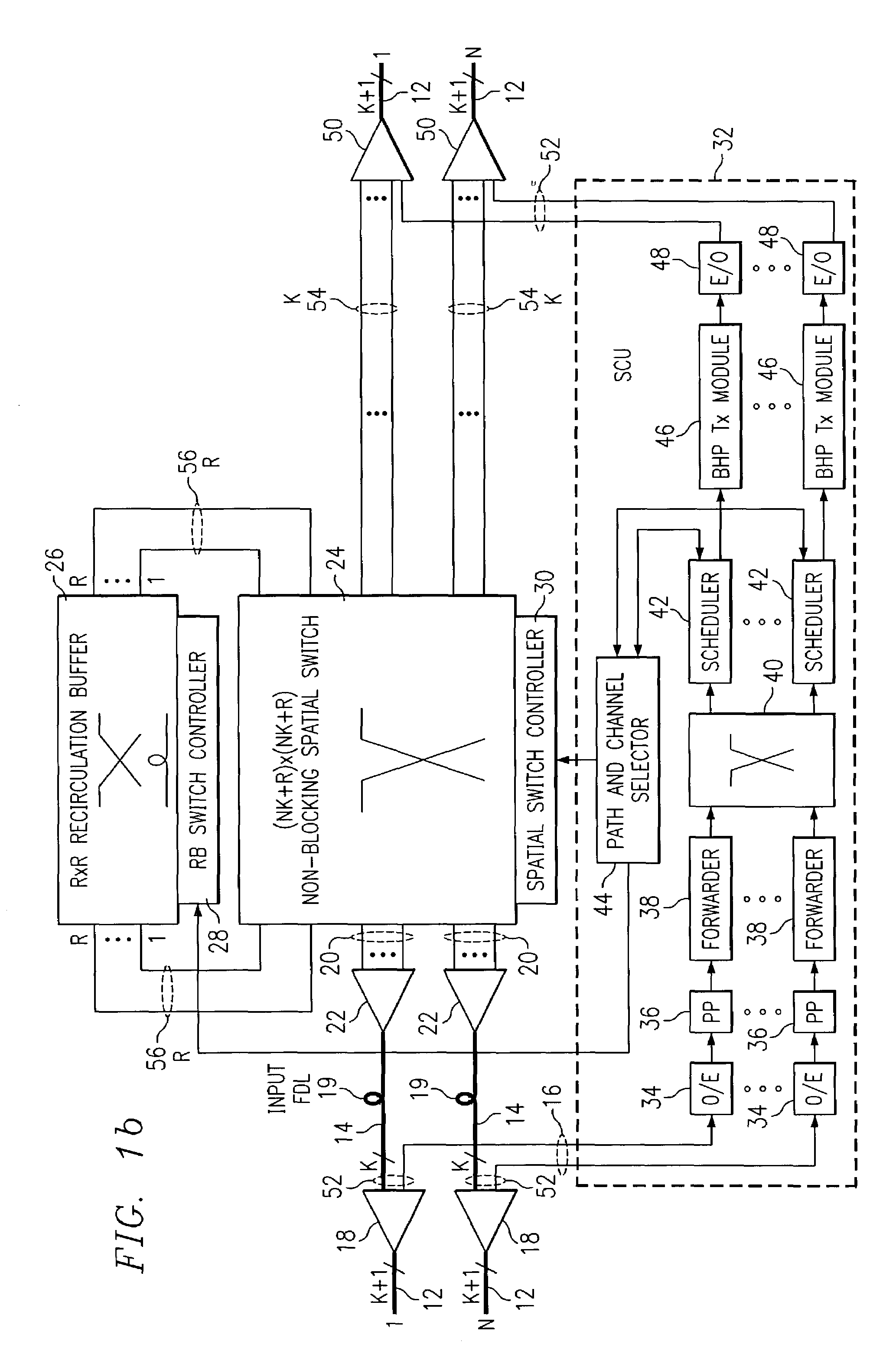Method and apparatus for burst scheduling
a technology of optical switching and burstswitching, applied in the field of telecommunications, can solve the problems of significant loss of statistical multiplexing efficiency, increase in capacity, and limited use of optical switching for facility management/control applications, and achieve the effect of reducing the amount of scheduling information
- Summary
- Abstract
- Description
- Claims
- Application Information
AI Technical Summary
Benefits of technology
Problems solved by technology
Method used
Image
Examples
Embodiment Construction
[0029]The present invention is best understood in relation to FIGS. 1-14 of the drawings, like numerals being used for like elements of the various drawings.
[0030]FIG. 1a illustrates a general block diagram of an optical burst switched network 4. The optical burst switched (OBS) network 4 includes multiple electronic ingress edge routers 6 and multiple egress edge routers 8. The ingress edge routers 6 and egress edge routers 8 are coupled to multiple core optical routers 10. The connections between ingress edge routers 6, egress edge routers 8 and core routers 10 are made using optical links 12. Each optical fiber can carry multiple channels of optical data.
[0031]In operation, a data burst (or simply “burst”) of optical data is the basic data block to be transferred through the network 4. Ingress edge routers 6 and egress edge routers 8 are responsible for burst assembly and disassembly functions, and serve as legacy interfaces between the optical burst switched network 4 and conven...
PUM
 Login to View More
Login to View More Abstract
Description
Claims
Application Information
 Login to View More
Login to View More - R&D
- Intellectual Property
- Life Sciences
- Materials
- Tech Scout
- Unparalleled Data Quality
- Higher Quality Content
- 60% Fewer Hallucinations
Browse by: Latest US Patents, China's latest patents, Technical Efficacy Thesaurus, Application Domain, Technology Topic, Popular Technical Reports.
© 2025 PatSnap. All rights reserved.Legal|Privacy policy|Modern Slavery Act Transparency Statement|Sitemap|About US| Contact US: help@patsnap.com



